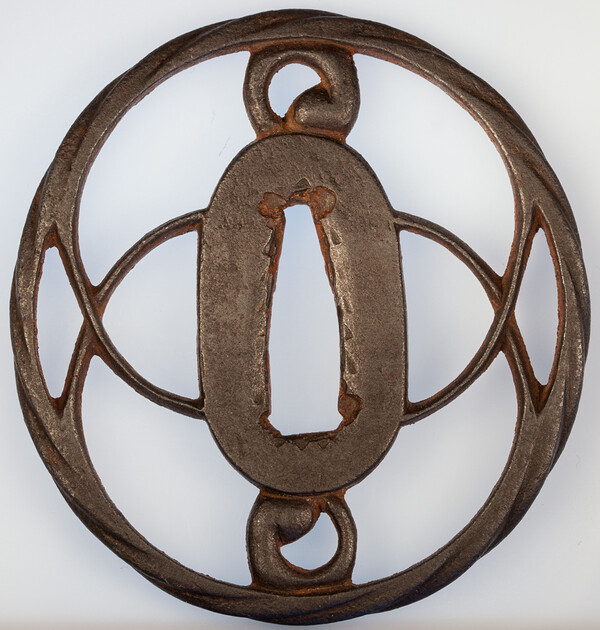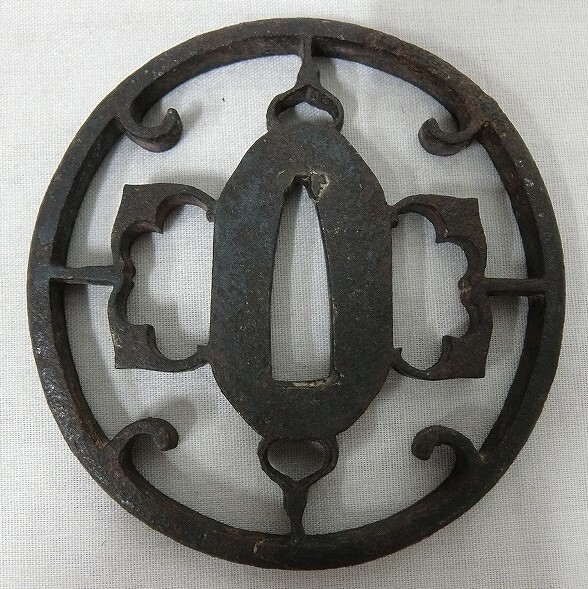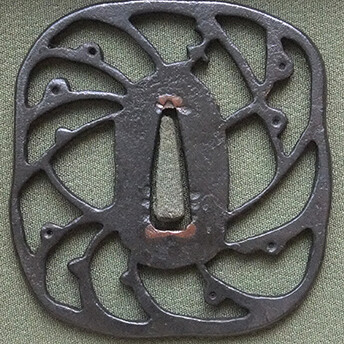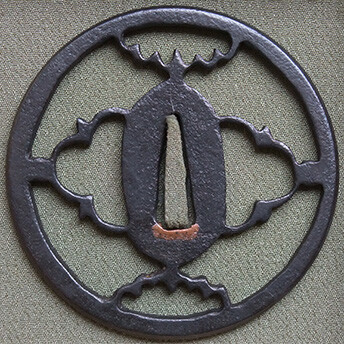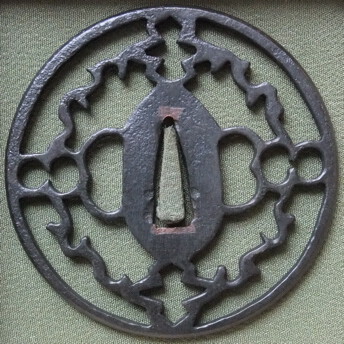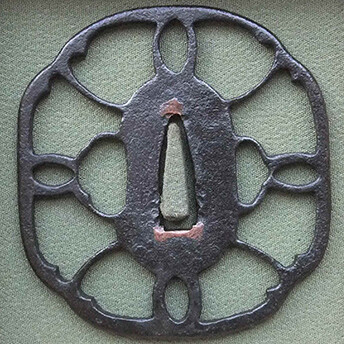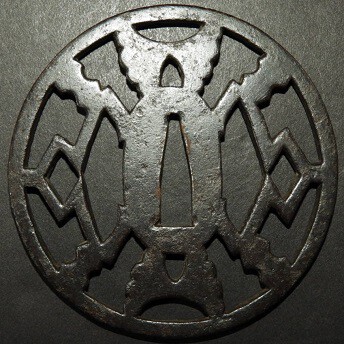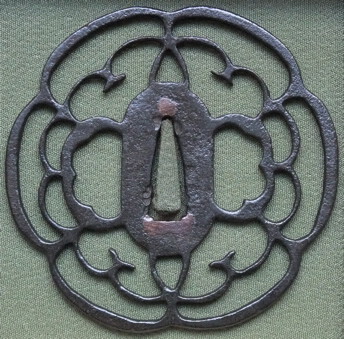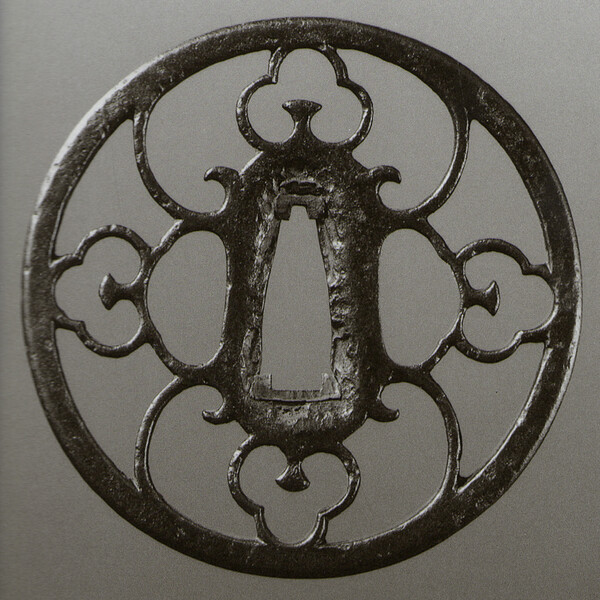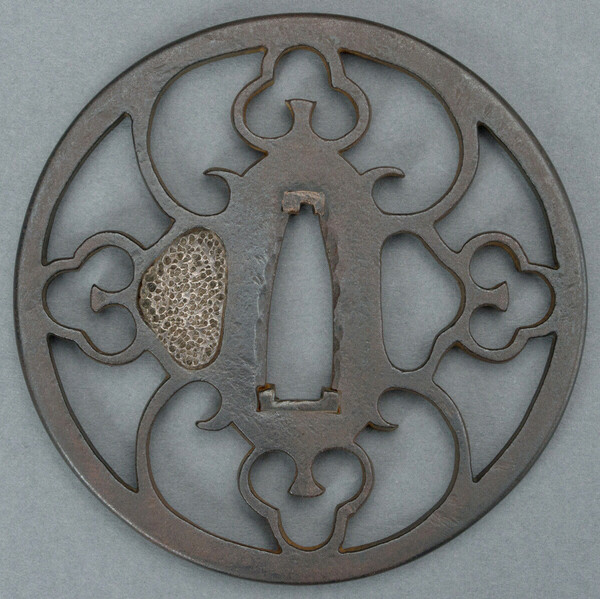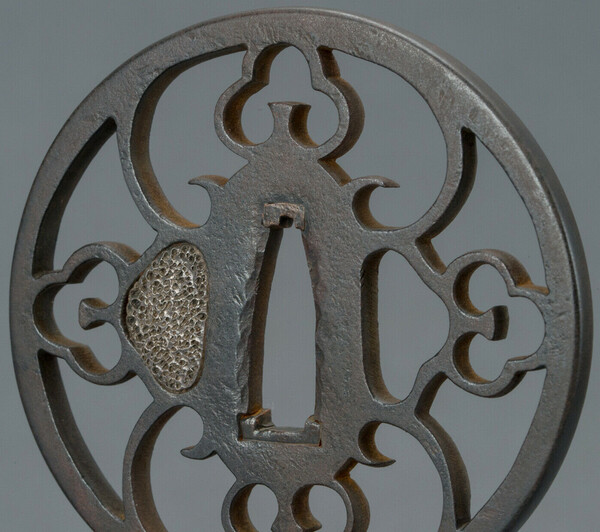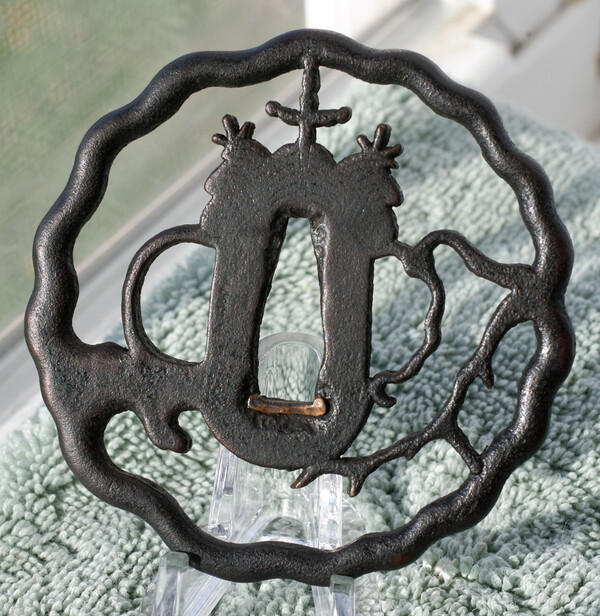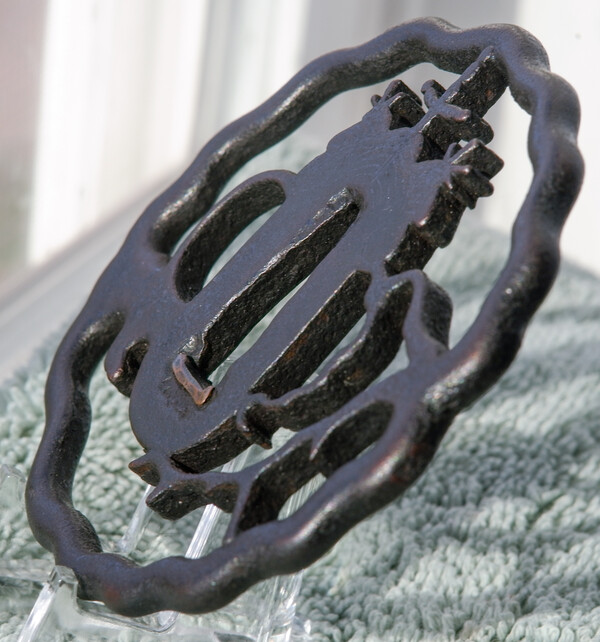-
Posts
323 -
Joined
-
Last visited
Everything posted by lotus
-
I was also going to say Akasaka and a super nice one at that!
-
Agree with Dale, very nice one. I especially like the dragon fly!
-
Dale - The other side is similar and also signed, some slight differences based on the design. Attaching a couple close views of it. I figure if its cast iron, I could probably clean it up as if it was a cast iron skillet! I assume anyway...
-
Very cool video, I was unaware that these "traditional" cast methods are still in use. Seems like a definite step up in comparison to the chinese cast fakes...
-
Oh ok, I had not seen one before. Do these heat protective coasters have a name?
-
Yes, I completely agree it is a decorative item and not a Tsuba. As for it being cast, I am still on the fence. Let us assume such huge cast decorative items were made. Where are the others? I have looked quite extensively and can not locate a single one even close to this one's size and crazy weight. Could the reason we can not find one be that it is, indeed, not cast? I could take some more closer up pics that might shed more light on the question. Though I really don't mind if it indeed turns out to be cast!
-
Yes, it is magnetic. I don't see any signs of cast lines but the iron shows some porousness, but couldn't that be due to corrosion? Seems crazy to make such a huge and heavy cast Tsuba. If it is cast, the mei looks to be chiseled on after.
-
I picked this up mostly as a curiosity and I also like the design. I know it is in rather poor shape. That aside, it is an astounding 8.5 inches (21.59 CM) round. About a half inch thick and is over 7.5 pounds! I believe it is made of iron since it is magnetic and it has an bronze-like (brass) patina? It is signed on both sides Bushu Ju Masanobu. So many questions : Was this made to sell on the docks for westerners? Was this a presentation tsuba given as a gift to someone of status? I don't think this thing is cast but I wanted to ask anyways? Who made it? The real Masanobu? Gimei? Do I clean this thing like I would my regular old iron Tsubas?
-
Yeah, that looks correct. Thank you Jean.
-
Looking for help translating this mei (sorry for the poor quality as the tsuba is in process of being shipped) Thanks, Patrick R.
-
John - Yours does show clear cast lines, especially in the 3rd pic. The ebay one in the last pic looks much better. I would like to see better lighting on the inner walls to be sure though. Also, the execution and subtle differences in the ebay are a definite improvment over the cast one. They used sand iron which can sometimes give it a sort of grainy texture to the iron. The ebay pics might be showing that to us. Attached is my Tochibata which is still one of my favorites. I also have a couple other rope rimmed Tsuba, one of which "could" be a Tochi but I am not sure of the other one. Will post pics when I have some time...
-
Authentic handmade tsuba made to look like it has been cast. Solved it!
-

Another question about originals or modern reproduction tsuba
lotus replied to roger dundas's topic in Tosogu
I should have put "At first glance" before my comment as I did not look at it in detail. Would be safe to say that Ford's observations are correct. In addition there is some crude carving in those sideways hearts on the Owari piece. -

Another question about originals or modern reproduction tsuba
lotus replied to roger dundas's topic in Tosogu
Those look good to my eyes and I agree, I doubt modern makers would bother with double sekigane. -
Yeah, I agree that it might be too thin for Owari. How about Ko-Shoami?
-
I agree that the surface treatment does look a little suspect. As for the previous 2 I posted, that 1st one is being sold as an antique Owari (only asking 1200) but that site also has some obvious chinese fakes and they also make modern tsuba. The 2nd one sold on yahoo Japan for very cheap but the condition was very poor (lots of corrosion and maybe in a fire like Curran said)...
-
Another Owari exercise. Same as my original post. Both Owari? If not, what are they. Both are about 7 cm in diameter, The darker one 5.5 mm in width and the otheer 5 mm in width.
-
Yeah, so the first one was on yahoo Japan and went for $350 or so. Enough people thought it was real. The second one came from the web site Richard provided. The person there make tsuba using traditional methods but are indeed modern made. They just look like antique Tsuba. Some pull it off better than others. Attached are a few samples...
-
Taking this a step forward. Can you pick out the real from the fake? Or are they both real? Or are they both fake? (no cheating by looking at any afore mentioned web sites)
-
Richard Wow, now we have to worry about those! While those tsuba do look like they have homogeneous iron, a true antique tsuba can also look like that depending on how it is photographed. Maybe it is safe to only buy a tsuba online when the pics are good enough to show the true nature of the iron and it's patina??
-
Mark - Yeah, there is kebori carving in the top leaves but it is very faint indeed and hard to photograph. And like Curran pointed out, the outer rounding of the kozuka ana does seem to match with those from the Hayashi school. Though either school sounds good to me.
-
Thanks for all the replies, I learned quite a bit from them. And Richard, just wow on the removal of that wax. That type of thing would be impossible to detect via pictures alone.
-
Attached is an Owari from the Sasano book. The second image is a Tsuba using the same exact design but, note the chunkiness of the sukashi walls, youthful iron, and lack of finesse with the trefoils for example. Is this "newer" just a late generation Owari or something more modern? The last pic shows is included to show a little more of the nature of the iron. Thoughts? Dimensions : 83.5mm x 83.8mm, thickness 5.7mm
-







